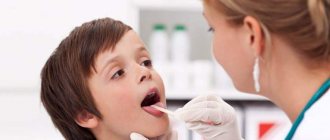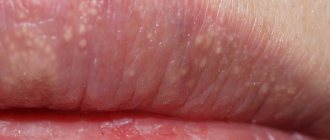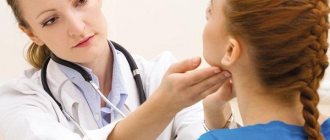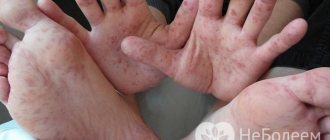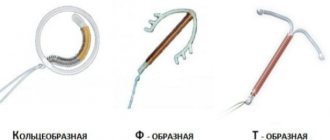Malaria is caused by parasites of the genus Plasmodium. These parasites are transmitted to humans through the bites of infected female Anopheles mosquitoes, which are called "malaria vectors." There are five species of parasites that cause malaria in humans, and two of these species, P. falciparum and P. vivax, are the most dangerous.
- In 2021, P. falciparum was estimated to account for approximately 99.7% of malaria cases in the WHO African Region, 50% of cases in the WHO South-East Asia Region, 71% of cases in the Eastern Mediterranean Region and 65% in the Western Region. parts of the Pacific Ocean.
- P. vivax is the predominant parasite in the WHO Region of the Americas, where it accounts for 75% of malaria cases.
Symptoms
Malaria is an acute febrile disease. In a person who is not immune, symptoms usually appear 10 to 15 days after being bitten by an infected mosquito. The first symptoms—fever, headache, and chills—may be mild, making malaria difficult to detect. If treatment is not started within the first 24 hours, P. falciparum malaria can develop into a severe illness that is often fatal.
Children with severe malaria often develop one or more of the following symptoms: severe anemia, respiratory failure due to metabolic acidosis, or cerebral malaria. Adults also often experience multiple organ failure. In areas where malaria is endemic, people may develop partial immunity, in which infections occur without symptoms.
What are the features of tropical malaria?
Tropical malaria is considered the most severe form of the disease. It is this that most often leads to death. The development and clinical picture of this form differ from the others:
- more acute onset;
- vivid manifestations of toxic syndrome (nausea, vomiting, diarrhea);
- the febrile state can be almost constant, attacks occur without any pattern;
- anemia is more pronounced;
- the nervous system is more affected.
Sick child
Also, the dangers of tropical malaria include rapid enlargement of the spleen and extensive liver damage.
Who is at risk?
In 2021, nearly half the world's population was at risk of malaria. Most malaria cases and deaths occur in sub-Saharan Africa. However, WHO regions such as South-East Asia, the Eastern Mediterranean, the Western Pacific and the Americas are also at risk.
The risk of contracting malaria and developing severe disease is significantly higher among some groups of the population. These groups include infants, children under five years of age, pregnant women and people with HIV/AIDS, as well as non-immune migrants, mobile populations and travelers. National malaria control programs need to take special measures to protect these populations from malaria infection, taking into account their specific circumstances.
How to treat a virus
Not every person is worried about a small cold that appears on the lip and goes away soon.
Every healthy person with good immunity can get rid of the virus on their own. What should those people do who cannot boast of good health?
How to treat malaria on the lips? Creams and ointments, which are sold in every pharmacy, can combat the development of this virus. They can be bought without a prescription. But it is best to visit a doctor, he will prescribe medications that are right for you. If the case is advanced, then various medications taken orally may be required for treatment. This will allow you to attack the virus with redoubled force. In this case, we can hope that the likelihood of relapse of the disease will be minimized.
Burden of disease
According to the latest edition of the World Malaria Report, released in December 2021, 228 million people worldwide fell ill with malaria in 2021, up from 231 million in 2017. That same year, an estimated 405,000 people died from malaria people, up from 461,000 in 2021.
The WHO African Region continues to bear a disproportionate share of the global malaria burden. In 2018, the region accounted for 93% of malaria cases and 94% of malaria deaths.
In 2021, more than half of all malaria cases in the world occurred in six countries: Nigeria (25%), Democratic Republic of the Congo (12%), Uganda (5%), Ivory Coast, Mozambique and Niger (4% each). every).
Children under five years of age are especially susceptible to malaria; in 2021, they accounted for 67% (272,000) of all malaria deaths worldwide.
- World Malaria Report 2021 – in English
Consequences and complications
If correct and timely treatment of the disease has not been carried out, in the case of three-day malaria the disease can last about two years, with four-day malaria - several years, with tropical - about a year.
The consequences of the illness include dysfunction of internal organs, the central nervous system, and prolonged disability.
The most serious complications of malaria are:
- coma;
- splenic rupture;
- acute nephritis;
- hemoglobinuric fever;
- psychosis.
If a patient develops a malarial coma , he falls into a deep sleep from which he cannot be awakened. In this case, convulsive seizures, fecal and urinary incontinence, and a characteristic appearance are noted.
When the spleen ruptures, there is a sharp pain in the abdomen, fainting, tension of the abdominal muscles in the left hypochondrium, and the presence of a painful tumor in this place. In this case, urgent surgery is necessary.
With hemoglobinuric fever, chills develop sharply, the temperature can rise to 41 degrees. There is a severe headache, vomiting, and body aches. Urine becomes dark red, almost black, and jaundice develops. Severe thirst. The attack lasts several hours or several days, but already on the first or second day the person may die.
The most common complication of the tropical form is cerebral malaria . Three stages of this condition develop: somnolence, stupor and coma. At the somolent stage, headache, lethargy, photophobia, hyperesthesia , and intracranial hypertension . In the stage of stupor, all symptoms worsen; convulsions and convulsive twitching of different muscle groups are possible. The skin color is gray with an earthy tint, the mucous membranes are dry. Tachycardia , tachypnea , and hypotension develop . The patient falls into deep sleep. During the coma stage, the patient remains unconscious and does not respond to stimuli. Without treatment, this complication is fatal.
It is important to realize that the tropical form, with late treatment or its absence, leads to the death of the patient.
Transmission of infection
Most cases of malaria are transmitted through the bites of female Anopheles mosquitoes. There are over 400 different species of Anopheles mosquitoes; about 30 species are significant vectors of malaria. All significant vector species bite at dusk and dawn. The intensity of transmission depends on factors related to the parasite, the vector, the human host and the environment.
Anopheles mosquitoes lay eggs in water, which hatch into larvae that eventually develop into adult mosquitoes. Female mosquitoes need blood to lay eggs. Each Anopheles mosquito species has its own aquatic habitat; some, for example, prefer small, shallow accumulations of fresh water, such as puddles and hoof marks, which are abundant during the rainy season in tropical countries.
Transmission occurs more intensely in places where mosquitoes have a longer lifespan (giving the parasite enough time to complete its development in the mosquito) and where the vector prefers to bite people rather than animals. For example, the long lifespan of African vector species and the fact that they consistently prefer to bite humans are the main reasons why approximately 90% of all malaria deaths occur in Africa.
Transmission of infection also depends on climate features, such as rainfall patterns, temperature and humidity, which also affect the number and survival of mosquitoes. In many places, transmission is seasonal and peaks during and immediately after the monsoon seasons. Malaria epidemics can occur when climatic and other conditions suddenly become favorable for transmission in areas where people have little or no immunity to malaria. In addition, epidemics can occur when people with weak immune systems enter areas with intense malaria transmission, for example to seek work or as refugees.
Another important factor is human immunity, especially among adults in areas with moderate to intense transmission. Partial immunity develops over several years of exposure, and although it never provides complete protection, it reduces the risk of developing severe illness in the event of a malaria infection. For this reason, most malaria deaths in Africa occur among young children, while in areas with less intense transmission and low immunity, all age groups are at risk.
Pathogenesis
The causative agent of malaria is protozoa of the genus Plasmodium ( plasmodia ). Infection occurs when a female malaria mosquito injects sporozoites (this is the name of one of the stages of the life cycle of the pathogen). This happens when the mosquito sucks blood.
After entering the blood, Plasmodium sporozoites end up in liver hepatocytes, provoking the onset of the preclinical exoerythrocytic (liver) stage of the disease. In liver cells, sporozoites multiply (schizogony), resulting in the formation of liver merozoites. After a few weeks, they penetrate the blood again.
If the infection was caused by P.falciparum and P.malariae, the liver stage is completed. If the disease is caused by another type of malarial plasmodium, “dormant” liver stages (hypnozoites) remain in the body. They can cause parasites to escape into the blood and cause relapses of the disease months and years after infection.
The next stage of malaria - clinical or erythrocyte - begins when merozoites that enter the blood attach to specific receptors on the membranes of erythrocytes.
Mechanism of transmission of malaria
By the way, scientists in the process of research have proven that plasmodia, when they enter a victim, stimulate the body to secrete those substances that attract mosquitoes.
Therefore, the sequence of occurrence of malaria is as follows: after a mosquito bite, plasmodium enters the human blood, later penetrates the liver, multiplies, then destroys red blood cells, after which the person develops a fever. This is precisely the answer to the question of establishing the sequence of occurrence of malaria.
Prevention
The main way to prevent and reduce malaria transmission is vector control. Sufficiently high coverage of a particular area with vector control measures provides some protection from infection to the entire population of the area.
To protect all people at risk of malaria, WHO recommends effective vector control measures. To do this, two methods can be effectively used in a wide variety of conditions - insecticide-treated mosquito nets and spraying residual insecticides indoors.
List of sources
- Baranova AM Modern problems of imported malaria and preventing the consequences of importation // ZNiSO.- M., 1995.-No. 2.-P.1-4.
- Voskresentsev V. A. Current problems of detection and prevention of malaria [Text] / V.
- A. Voskresentsev // Medical statistics and organizational and methodological work in institutions
- healthcare. - 2014. - No. 9. - P. 74-78.
- Litvinov, S.K. Vaccination against malaria: reality and prospects [Text] / S.K.
- Litvinov, A. M. Bronshtein, E. N. Morozov // Epidemiology and infectious diseases. —
- 2017. - No. 3. - P. 153-156.
- Lysenko, A. Ya. Malaria: parasitology, epidemiology, prevention and immunity: Center. Institute of Improvement doctors: lecture / A. Ya. Lysenko, A. E. Belyaev. - M.: TSOLIUV, 1981. - 42 p.
Insecticide treated mosquito nets
The use of insecticide-treated mosquito nets (ITNs) during sleep may reduce the likelihood of mosquito-human contact through both the presence of a physical barrier and exposure to the insecticide. Mass eradication of mosquitoes in areas where such nets are widely available and actively used by local residents can provide protection to the entire population.
Insecticide-treated nets in Africa protected about half of all people at risk of malaria in 2021, up from 29% in 2010. However, ITN coverage has shown little growth since 2021.
Spraying residual insecticides indoors
Another effective way to rapidly reduce malaria transmission is indoor residual spraying (IRID). Insecticide spraying inside residential areas is carried out once or twice a year. To achieve effective protection of the population, a high level of RIODVP coverage must be ensured.
Globally, the rate of use of RADI for protection has decreased from a peak of 5% in 2010 to 2% in 2021 in all WHO regions except the Eastern Mediterranean Region. The decline in MRV coverage occurs as countries shift from using pyrethroid pesticides to more expensive alternatives to address pyrethroid resistance in mosquitoes.
Antimalarial drugs
Antimalarial drugs can also be used to prevent malaria. Prevention of malaria among travelers can be achieved through chemoprophylaxis, which suppresses the blood stage of malaria infection, thereby preventing the disease from developing. Among pregnant women living in areas of moderate to intense transmission, WHO recommends intermittent sulfadoxine-pyrimethamine preventive therapy at every routine antenatal visit after the first trimester of pregnancy. Similarly, intermittent preventive therapy with three doses of sulfadoxine-pyrimethamine as part of routine vaccination is recommended for infants living in areas of Africa with high transmission rates.
Since 2012, WHO has recommended seasonal malaria chemoprophylaxis in areas of the Sahel subregion as an additional malaria prevention strategy. This strategy involves administering monthly courses of amodiaquine plus sulfadoxine-pyrimethamine to all children under five years of age during the high transmission season.
Does malaria appear on the lips?
The appearance of small blisters filled with clear liquid on the lips is sometimes called malaria or fever. However, such a term is incorrect, since the cause of the lesion is the herpes simplex virus. As the disease develops, it goes through several stages:
- tingling;
- the appearance of bubbles;
- formation of ulcers;
- scab formation;
- skin healing.
In addition to rashes, the patient may experience headache, weakness, general deterioration in health, and a slight increase in temperature.
Insecticide resistance
Since 2000, progress in malaria control has been achieved largely through increased coverage of vector control interventions, particularly in sub-Saharan Africa. However, these achievements are under threat due to the increasing resistance of Anopheles mosquitoes to insecticides. Between 2010 and 2021, cases of mosquito resistance to at least one of the four most common classes of insecticides were reported in 72 countries, according to the latest edition of the World Malaria Report. In 27 countries, mosquito resistance to all major classes of insecticides was observed.
Despite the rise and spread of mosquito resistance to pyrethroids, insecticide-treated nets continue to provide significant levels of protection in most areas of human activity. This was confirmed by the results of a large study coordinated by WHO in five countries between 2011 and 2021.
Despite the encouraging results of this study, WHO continues to reiterate the urgent need for new and improved tools to combat malaria worldwide. WHO also emphasizes the urgent need for all countries where malaria transmission continues to develop and implement effective strategies to combat insecticide resistance to prevent the decline in the effectiveness of the most common vector control tools.
Diagnosis and treatment
Early diagnosis and treatment of malaria helps reduce the severity of the disease and prevent death. These measures also help reduce the intensity of malaria transmission. The most effective existing treatment regimen, especially for P. falciparum malaria, is artemisinin combination therapy (ACT).
WHO recommends that in all cases of suspected malaria, the diagnosis be confirmed using a diagnostic test to identify the parasite (microscopic examination or rapid diagnostic test) before starting treatment. The period for obtaining parasitological confirmation is up to 30 minutes. The decision to carry out treatment based solely on clinical symptoms can only be made in cases where establishing a parasitological diagnosis is impossible. More detailed recommendations are available in the third edition of the WHO Malaria Treatment Guidelines, published in April 2015.
Treatment with folk remedies
The use of folk remedies to treat this disease is only possible if they are used as additional methods for the general restoration of the body. In no case should such treatment be substituted for taking anti-malaria drugs, as this can lead to fatal consequences.
To treat this disease, the following folk remedies are used:
- Orange peel. Crush dry orange peel and apply half a teaspoon of this powder three times a day.
- Willow bark. 2 tsp pour crushed willow bark into 1.5 cups of water and keep the product on low heat until the amount of liquid is reduced to one cup. You need to drink the decoction in the morning on an empty stomach, adding a little honey to it.
- Mustard and wine. Pour 100 ml of wine into a ladle of a teaspoon of mustard and add a little salt. Drink three times a day. This remedy helps reduce the symptoms of fever.
- Garlic. The head of garlic needs to be peeled so that the cloves are without peel. Grind them and add 1 glass of water. Leave to infuse for 12 hours. Drink the prepared infusion throughout the day in small sips.
- Star anise root. 4 tsp crushed root, pour a glass of boiled water and cook for several minutes. Drink 3 tbsp. three times a day.
- Parsley juice with vodka. Pass 2 kg of parsley through a meat grinder, squeeze out the juice and mix it with 150 ml of vodka. Drink 100 ml morning and evening.
- Black radish juice. 50 g of fresh radish juice should be mixed with 50 g of vodka. Divide the product into three parts and drink them throughout the day. On the second day, it is recommended to drink the entire portion in the morning.
- Basil. Pour 200 g of leaves into half a liter of water, add a little cardamom powder and black pepper and boil for 20 minutes. After 2 hours, mix with a small amount of honey and drink 3 tbsp. three times a day.
- Grapefruit. Half the fruit should be poured with 500 ml of water and boiled for several minutes. Strain and drink a glass 2 times a day.
- Cinnamon. 1 tsp cinnamon with a small pinch of pepper, pour half a liter of water and boil for 5 minutes. Cool, add a spoonful of honey and drink 100 g 2 times a day.
Antimalarial drug resistance
The problem of resistance to antimalarial drugs continues. Resistance of the malaria parasite P. falciparum to previous generations of drugs such as chloroquine and sulfadoxine-pyrimethamine (SP) became widespread in the 1950s and 1960s, weakening efforts to control malaria and erasing gains in child survival rates.
Ensuring the effectiveness of antimalarial drugs is critical to malaria control and elimination. Regular monitoring of drug effectiveness is required to develop treatment strategies for malaria-endemic countries and to ensure timely detection and control of drug resistance.
In 2013, WHO adopted the Greater Mekong Subregion Artemisinin Resistance Emergency Response Plan (ERERP), a comprehensive proactive plan to contain the spread of drug-resistant parasites and provide life-saving supplies to all populations at risk of malaria. However, already in the process of this work, other, independent centers of resilience emerged in other geographical areas of the subregion. In parallel, there have been reports that in some cases the resistance of the infection to “partner” components in artemisinin-combination therapy is increasing. Changing trends in malaria incidence have created a need for a different approach.
At the World Health Assembly in May 2015, WHO adopted the Greater Mekong Subregion Malaria Elimination Strategy (2015–2030), which was endorsed by all countries in the subregion. The strategy aims to eliminate all types of human malaria across the region by 2030 and includes a series of immediate actions, particularly in areas where multidrug-resistant malaria is widespread.
All countries in the subregion, with technical support from WHO, have developed national malaria elimination plans. WHO, together with partners, is providing ongoing support to countries' efforts to eliminate malaria through the Mekong Malaria Elimination Programme, a new initiative that is a continuation of the EMER.
Classification
Depending on the causative agent of malaria, the symptoms, course of the disease and prognosis differ. The life cycle of the malaria pathogen also depends on the variety. The causative agent of malaria is several types of Plasmodium:
- Plasmodium vivax is the causative agent of tertian malaria. The duration of the incubation period is from 1 to 3 weeks, in some cases up to 14 months. The attacks occur every other day. The pathogen is one of the most common.
- Plasmodium malariae – This species causes quadrant malaria. The incubation period lasts from 3 to 6 weeks. Recurrence of attacks - after 2 days.
- Plasmodium falciparum causes tropical malaria. The duration of the incubation period is from 9 to 16 days. Recurrence of attacks every other day, if the form is severe, they last from a day to a day and a half, while periods of normal temperature are very short. This type of disease can lead to impaired brain function and the development of cerebral malaria. The temperature rises to 40 degrees, the head hurts severely, and the patient may become delirious. Every fifth case is fatal. This is the most common form of the disease.
- Plasmodium ovale - causes malaria ovale. The duration of the incubation period is 10-20 days. Recurrence of attacks – every other day.
The answer to the question that malaria is caused by the amoebas trypanosomes, plasmodia and ciliates is clear - this disease is provoked by plasmodia.
You can examine in detail photos and pictures dedicated to the characteristics of different forms of pathogens in the corresponding presentations.
Surveillance
Surveillance involves monitoring cases of disease, systematically responding, and making decisions based on the findings. Currently, many countries with a high malaria burden have weak surveillance systems and are unable to assess the distribution and trends of the disease, making it difficult to optimize responses and respond to outbreaks.
Effective surveillance is needed at all stages of the progress towards malaria elimination. Strengthening malaria surveillance programs is urgently needed to ensure a timely and effective response to malaria in endemic regions, prevent outbreaks and re-emergence of the disease, monitor progress and hold governments and other global actors in the fight against malaria accountable.
In March 2021, WHO released guidance on surveillance, monitoring and evaluation of malaria cases. The guide provides information on global surveillance standards and recommendations for strengthening country surveillance systems.
Elimination
Malaria elimination is defined as the interruption, through targeted action, of local transmission of a specific species of malaria parasite within a defined geographic area. Preventing resurgence of transmission requires continued efforts. Malaria elimination is defined as the global incidence of malaria caused by human malaria parasites being achieved through targeted action at all times. The fact that malaria has been eliminated eliminates the need for further anti-malarial measures.
Elimination is expanding around the world, and more countries are moving closer to the goal of reducing malaria incidence to zero. In 2021, the number of countries reporting fewer than 100 cases of local transmission was 27, up from 17 in 2010.
Countries that have not reported a single local case of malaria for at least three consecutive years meet the criteria to apply to WHO for malaria elimination certification. In recent years, 10 countries have been certified as malaria-free by the WHO Director General: Morocco (2010), Turkmenistan (2010), Armenia (2011), Maldives (2015), Sri Lanka (2016) .), Kyrgyzstan (2016), Paraguay (2018), Uzbekistan (2018), Algeria (2019) and Argentina (2018). The WHO Malaria Elimination Framework (2017) provides a comprehensive set of tools and strategies to achieve and sustain elimination.
Vaccines against malaria
To date, RTS,S/AS01 (RTS,S) is the first and only vaccine demonstrated to significantly reduce the incidence of malaria and life-threatening severe malaria in African young children. It works against P. falciparum, the world's deadliest malaria parasite and the most common in Africa. In a large, four-year clinical trial in children who received four doses of the vaccine, it prevented malaria in 4 out of 10 cases.
Leading WHO advisory bodies on malaria and immunization, given the high public health importance of this vaccine, have jointly recommended its phased introduction in parts of sub-Saharan Africa. In 2021, three countries (Ghana, Kenya and Malawi) began rolling out the vaccine in selected areas with moderate to high intensity malaria transmission. Vaccination is carried out as part of the national routine immunization program of each country.
The vaccine pilot program will provide answers to a number of outstanding questions regarding its use in public health. This will be important in understanding the optimal administration schedule for the four recommended doses of RTS,S; the potential role of vaccines in reducing child mortality; and its safety during routine vaccinations.
The program is being coordinated by WHO, together with the ministries of health of Ghana, Kenya and Malawi, as well as a number of national and international partners, including the non-profit organization PATH and (GSK), the vaccine developer and manufacturer.
Funding for the vaccine development program was provided through a collaboration between three of the world's largest health financing organizations: the Vaccine Alliance GAVI, the Global Fund to Fight AIDS, Tuberculosis and Malaria and UNITAID.
Diet
Diet 13 table
- Efficacy: therapeutic effect after 4 days
- Time frame: no more than 2 weeks
- Cost of products: 1500-1600 rubles per week
Diet 9th table
- Efficacy: therapeutic effect after 14 days
- Timing: constantly
- Cost of products: 1400 - 1500 rubles per week
Nutrition for malaria depends on the stage of the disease and its form. During attacks of fever, it is recommended to adhere to the principles of Diet 13 table , and in case of quinine-resistant forms of the disease - Diet 9 table .
When eating on the 13th table, it is recommended to include the following products in the menu:
- wheat bread crackers;
- low-fat broths from meat and fish;
- soups with cereals, puree soups;
- meat soufflés and steamed dishes;
- boiled lean fish;
- viscous porridge;
- egg white omelet;
- fermented milk dishes, cottage cheese;
- vegetable stew;
- purees and fruit drinks from berries and fruits;
- honey, marmalade, etc.
During fever, it is important to drink plenty of fluids. During the acute course of the disease, the consumption of fatty and fried foods, alcohol, legumes, fatty dairy products, and radishes is strictly prohibited. A detailed presentation of the diet is in its description.
WHO activities
WHO global technical strategy for malaria control 2016–2030.
Adopted by the World Health Assembly in May 2015, the WHO Global Technical Strategy for Malaria Control 2016–2030. sets technical parameters for work in all malaria-endemic countries. It aims to guide and support regional and national programs as they work to control and achieve malaria elimination.
This strategy sets ambitious but achievable global goals, including:
- reducing the incidence of malaria by at least 90% by 2030;
- reducing malaria mortality rates by at least 90% by 2030;
- eliminating malaria in at least 35 countries by 2030;
- preventing the re-emergence of malaria in all malaria-free countries.
The strategy was the result of a broad consultative process over two years involving more than 400 technical experts from 70 Member States.
Global Malaria Program
The WHO Global Malaria Program coordinates WHO's international efforts to control and achieve malaria elimination through:
- developing, communicating and promoting their adoption of norms, standards, policies, technical strategies and guidelines;
- independent assessment of global progress;
- developing approaches to strengthen capacity, improve systems and conduct surveillance;
- identifying factors that threaten effective malaria control and elimination, as well as finding new areas of action.
The Program is supported and advised by a Malaria Policy Advisory Committee (MPAC), composed of malaria experts appointed through open nominations. The mandate of the ACPM is to provide policy advice and technical advice on all aspects of malaria control and elimination through a transparent, flexible and credible rule-making process.
"A heavy burden requires high efficiency"
At the World Health Assembly in May 2021, WHO Director-General Dr Tedros Adhanom Ghebreyesus called for a new proactive approach to accelerate progress in the fight against malaria. A new initiative, High Burdens Call High Performance, implemented with active country participation, was launched in November 2021 in Mozambique.
Currently, 11 countries with the highest burden of disease are participating (Burkina Faso, Cameroon, Democratic Republic of the Congo, Ghana, India, Mali, Mozambique, Niger, Nigeria, Uganda and the United Republic of Tanzania). The main elements of the initiative are:
- mobilizing political will to reduce the burden of malaria;
- providing strategic information to achieve real change;
- improving guidelines, policies and strategies;
- coordinated efforts to combat malaria at the national level.
The High Burden Means High Impact initiative, carried out with the active participation of WHO and the WOM Partnership to End Malaria, is based on the principle that no one should die from a disease that is preventable and diagnosable and completely curable with existing medicines.
Causes of the virus
Many of us do not attach much importance to the situation when small ulcers appear - malaria on the lips. What are the reasons for its manifestation? This can be either stress or overstrain of the nervous system, or a cold or bacterial infection. Injury, fatigue, exhaustion, and being in the cold for a long time can also trigger the manifestation of the virus.
Malaria on the lips can spread to various areas of the skin. The virus can also develop on the mucous membrane. Common sites of infection are: the nasolabial triangle and its inner area, lips.

